As a tourist, if you mention the city Leuven to a Belgian, most likely one of the next topics which will come up in your conversation is Leuven’s prestigious university or a certain brand of beer. If the university topic comes up first, it doesn’t necessarily mean the conversation won’t be about beer. In Belgium, beer is always somewhere lurking about in the conversation, and any city with approximately 45,000 thirsty university students will inevitably have a fantastic beer culture. So it’s just a matter of time.
If you happen to mention Leuven to a French-speaking Belgian, you may want to refer to it as Louvain. In fact, Louvain is the accepted name in U.S. English, the same as Bruges is for Brugge. However, if you find yourself in a place called Louvain-la-Neuve, then you’ve taken the wrong train and the beer drinking recommendations in this blog post won’t be any help.

Leuven University was founded in 1425. It was so renowned that anyone holding public office within the Austrian Netherlands during the 1700’s had to have a degree from Leuven. It was abolished in 1797 following the French Revolution, but revived in 1834 after the establishment of an independent Belgium. The Germans tried desperately to wipe the university off the face of the earth in both world wars. While the university survived, the Germans did manage to make bonfires out of the library, sending over 100,000 priceless manuscripts and almost one million books up in smoke. As if all of that wasn’t good enough, in 1968, Belgium’s biggest university split into it’s two biggest universities. The Dutch-speaking Flemish students got to remain in Leuven while a new city of Leuven, called Louvain-la-Neuve, was built in the French part of Belgium specifically for the University of Louvain. And now you see how Belgians deal with language politics.
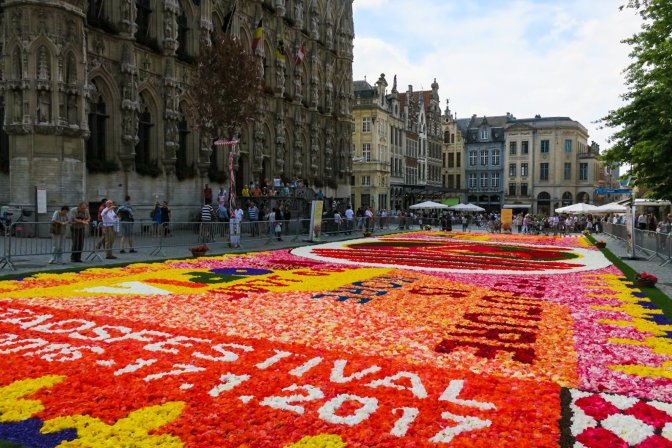
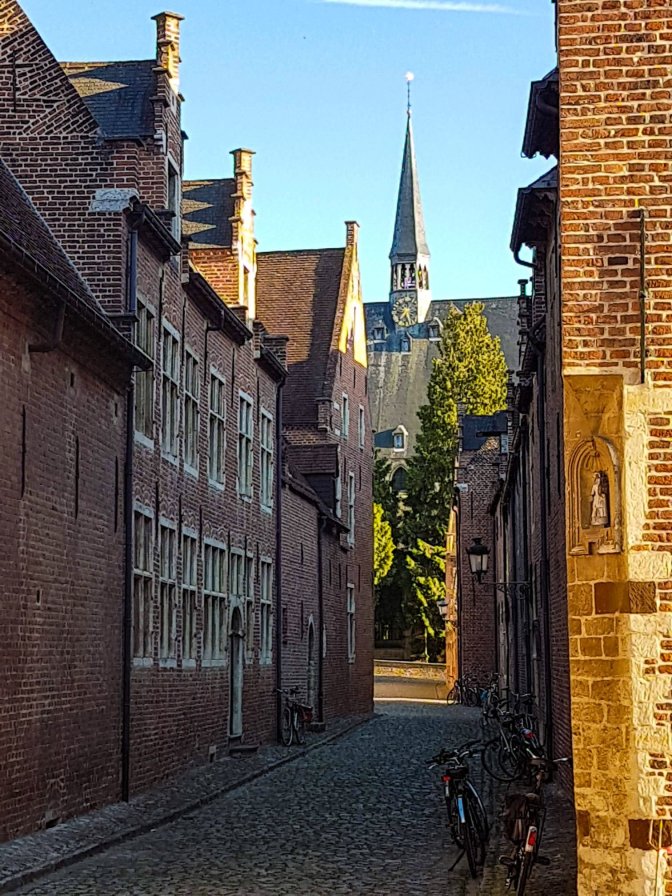
Maybe the one aspect of Belgian culture which both the Flemish and Wallonians agree on is the importance of beer. And beer in Leuven goes way back. For the Den Hoorn brewery, it goes way back to 1366.
Fast forward 342 years later…
In 1708, Den Hoorn hired a guy named Sebastien Artois as the master brewer. He weathered away at his trade for 9 years before buying the brewery and flushing 351 years of branded history down the toilet. Now called Brouwerij Artois, the brewery seemed destined for greatness.
Just 209 years later…
In 1926, Brouwerij Artois had the great idea to launch a winter beer. This winter beer would be the epitome of winteriness by carrying the Latin word for star in honor of the Star of Bethlehem in the Christmas story. A beer which today is the face of Belgian beer around the world. A beer which makes beer-bellied Americans in their man caves feel a tad bit more sophisticated while watching football. A beer so wintery it glows in the winter sun because nothing screams winter like a fresh, golden pilsner. That’s right. Stella. Which makes me wonder what their summer beer was.
While Stella Artois is the beer Leuven is famous for, Leuven has enough beer pilgrimages to rival larger cities like Brussels and Antwerp. A big part of the reason is that due to its important university, Leuven has historically been a hub for Catholicism in Belgium and aside from all the great drinking establishments you would expect from an old university town, there are no less than three beer abbeys in the vicinity.
While that makes Leuven sound pretty dandy, it has not always had the best reputation with American or British travel writers. Much of the criticism centers around one feature of Leuven which remains as annoying today as it did over 100 years ago.
Bondgenotenlaan. Avenue of the Allies.
This 800m monstrosity of a street running from the Leuven train station to the old city center is as touristically destitute of enjoyment as it is long. And it is this street which is unfortunately the first and last impression a visitor by train gets of Leuven.
The road from the railway-station to the centre of the town is commonplace indeed in its lack of picturesque Flemish house-fronts or stepped, “corbie,” Flemish gables.
Beautiful Europe: Belgium by Joseph E. Morris (1915)
Upon emerging from the rather imposing station, one sees… the long and uninteresting street…
Some Flemish Towns by George Wharton Edwards (1911)
Other authors give a more general impression of Leuven.
Yet, considering its history and achievement, Louvain is less interesting and less active than might be expected.
A Wayfarer in Belgium by Fletcher Allen (1934)
Louvain is… a dull place with 42,100 inhabitants.
Baedeker’s Belgium and Holland (1905)
It is possible that these impressions were partly due to the fact that all the beer abbeys had not yet become beer abbeys. They were just abbeys… with clergy… all running around…
The whole town seethed with black-robed priests, brown-robed, bare-footed monks, and white-coped nuns.
Spell of Belgium by Isabel Anderson (1915)
The streets are full of young priests…
Some Old Flemish Towns by George Wharton Edwards (1911)
Today, those priests, monks, and nuns are nowhere to be found in the city center. Just students and tourists jockeying for the best seats at its numerous cafes. I doubt a visitor today would find Leuven to be dull, although halfway down the Avenue of the Allies, it is possible some doubt will ferment. All I can say is stay the course.
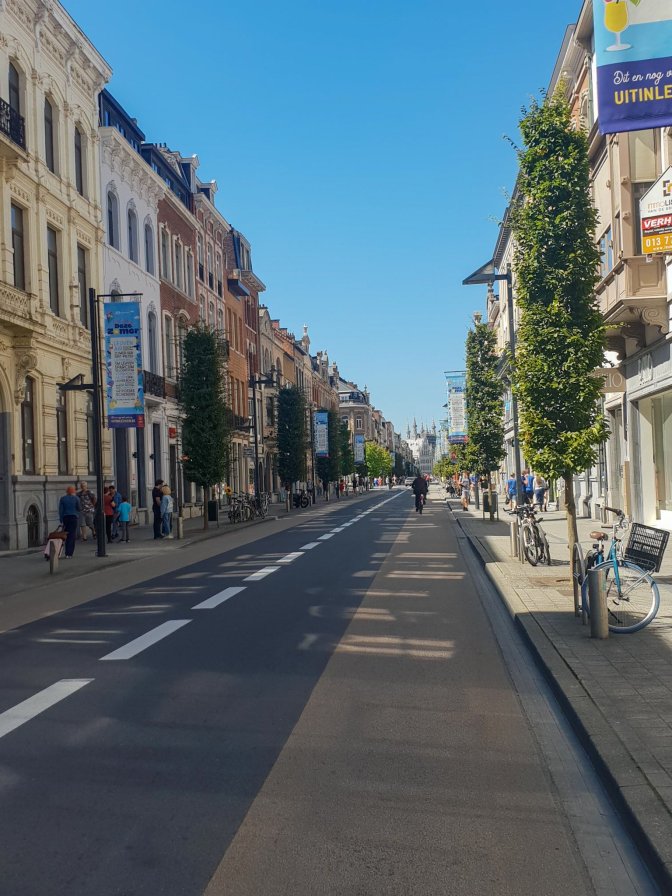
It’s Not Just a Beer, It’s a Journey
Once you have completed the long torturous walk down the Bondgenotenlaan (a bike really comes in handy here), the Hotel de Ville (or town hall) that will appear before you is arguably one of the two most beautiful in all of Belgium (along with Brussels). But don’t be too hasty to venture across the Grote Markt to get a closer look just yet.
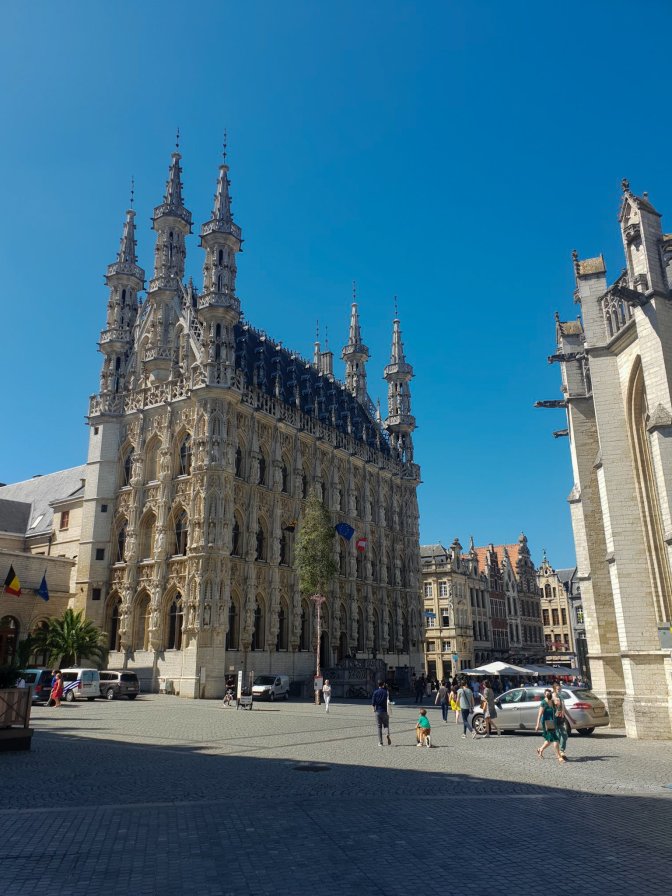
The history of Leuven probably won’t regale the average tourist with a list of famous residents, but if you want to get underneath the glorious displays of architecture and the university party atmosphere and connect with Leuven’s past, one should take a right before the Grote Markt down the Margarethaplein which runs along the cathedral.
One of the first buildings you will come to on your right has the typical Flemish stepped-gable and is one of the quintessential beer bars in Leuven. There in embossed lettering on the façade is De Fiere Margriet (or The Proud Margaret). If you stop for a beer, say hello to the proprietor Alexander (but don’t make any stupid joke about Belgian beer being better than Dutch beer. He’s Dutch.)


The Legend of Fiere Margriet
Back in 1235 lived two hoteliers with their 18-year old niece Margaret. The couple sold their hotel for a considerable sum. Since Swiss banks didn’t come into existence for another 500 years, the couple stashed the money away in the hotel. Meanwhile the niece was busy maintaining her innocence, thwarting all attempts to be wooed by the local lascivious males. On a dark and stormy night, eight good-for-nothing scumbags showed up at the hotel pretending to seek shelter from a storm (apparently the couple had not yet evacuated the premises after selling off the hotel). While Margaret was in the basement fetching wine, the ruffians strangled the couple. If only Margaret had taken a little extra time locating the Cabernet Sauvignon, perhaps things would have turned out different. But as she proudly emerged from the dank wine cellar, she discovered her dead relatives laying on the floor and the eight murderers searching for the money. They tied her up and one of the dashing scoundrels figured it was a good time to make a marriage proposal. Margaret the Proud proudly rebuffed him killing the romantic moment, and she was summarily murdered and dumped into the Dyle River. The glow of her dead corpse was seen by Henry I (the Duke of Brabant, not the King of England) floating down the river. She was venerated as a saint by the Catholic church, buried in Sint-Pieterskerk, and immortalized by the paintings of Pieter Verhaghen.
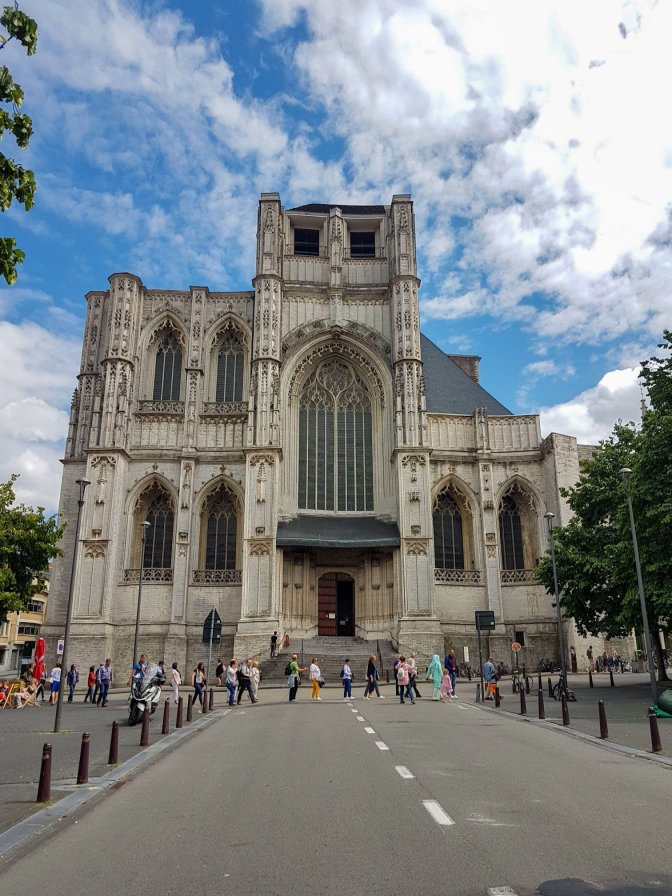
The legend as I have paraphrased it is taken from Some Old Flemish Towns by George Wharton-Edwards (1911). As legends usually are, there are many variations of them and there is a great article on the web about other takes on the legend. To kick off celebrating the beer culture of Leuven, one should toast The Proud Margaret of Louvain and best to do that at De Fiere Margriet. Either before of after the beer buzz, head across the street to Sint-Pieterskerk and visit the memorial of Margriet and view the Verhaghen paintings.

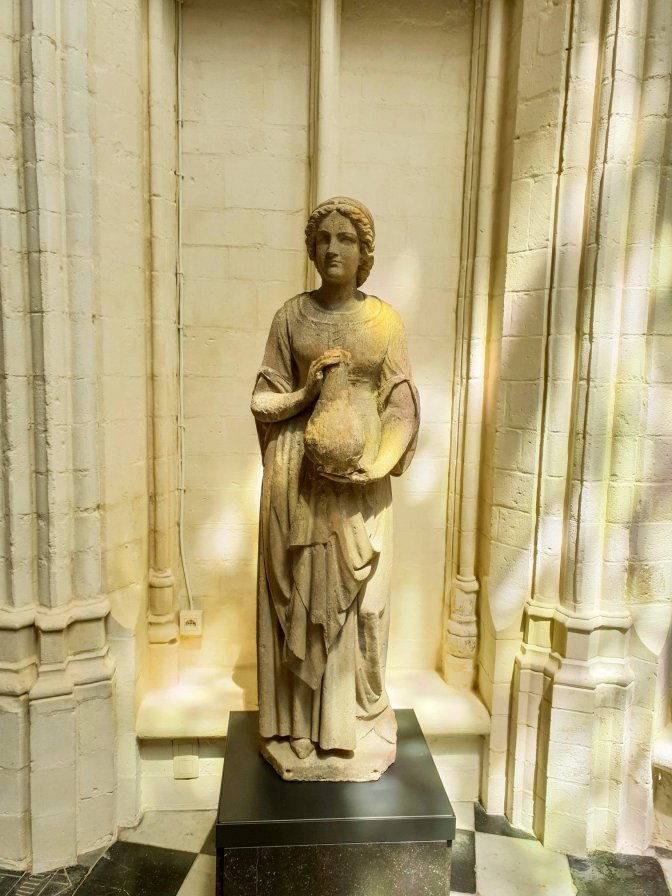
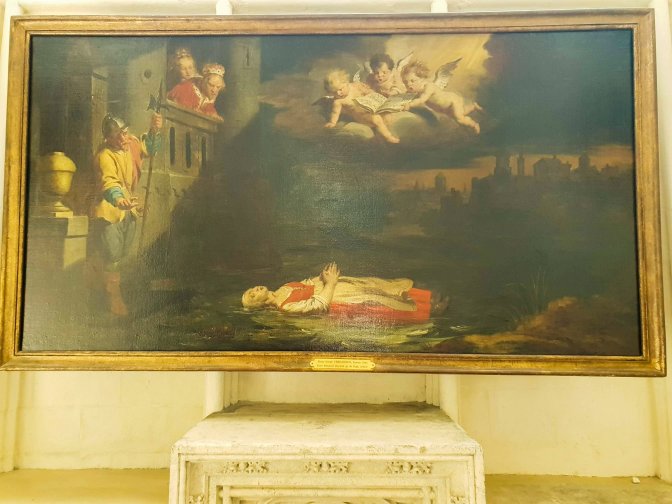
Map
All of the places mentioned in this post can be found on this map.
Beer Abbeys
Leuven has four abbeys, three of which have some link to Belgian beer culture. There is no need for me to explain their histories and how to get to them by bike. I can’t put it any better than Denzil over at the Discovering Belgium website and this wonderful post on cycling the four abbeys. Please take a moment to follow his blog. I highly recommend it. Meanwhile, I will focus on the beer angle.
Keizersberg Abbey
Keizersberg Abbey sits up on a hill which is linked to Julius Caesar and Knights Templar lore. I would not, however, go looking here for the Holy Grail or bloodline of Christ. The building itself is quite modern by Caesar and Templar standards. It was built in 1888 by monks from the Maredsous Abbey. There starts the beer angle. Like Maredsous Abbey, Keizersberg Abbey has never had a brewing tradition. However, monks make pretty good marketeers here in Belgium and the abbey name has been licensed to Brouwerij Van Steenberge in Ertvelde for the Keizersberg Tripel, which is none other than Bornem Tripel in disguise (a trick used by a lot of breweries dabbling in what are called Etiketbieren or Label Beers).

Park Abbey and Braxatorium Parcensis
Of the abbeys on this list, Park Abbey is the one that really feels like it has a storied past. Walking the grounds is a bit like walking thru a mixture of medieval looking buildings some showing what looks like a thousand years of wear and tear and others which have been restored to modern-medieval grandeur. To make this place even more of a must-see, back in 2017, a brewery was installed in the abbey by a wise entrepreneurial local brewer. A historical abbey near a population center without its own beer. I can’t think of a better idea. The brewery is called Braxatorium Parcensis (also referred to in general as Abdijbrouwerij Heverlee) and they have a slew of beers. Best to just check them out on the Braxatorium Parcensis website. In the meantime, stop at the Brasserie De Abdijmolen to try one or three.
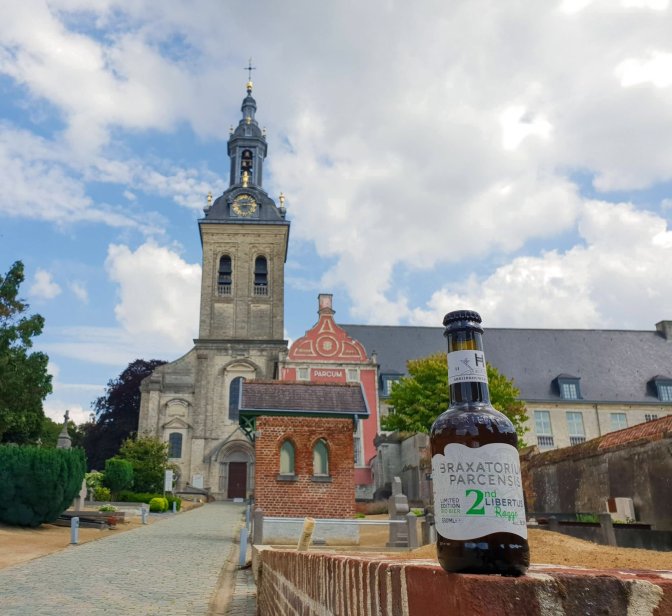
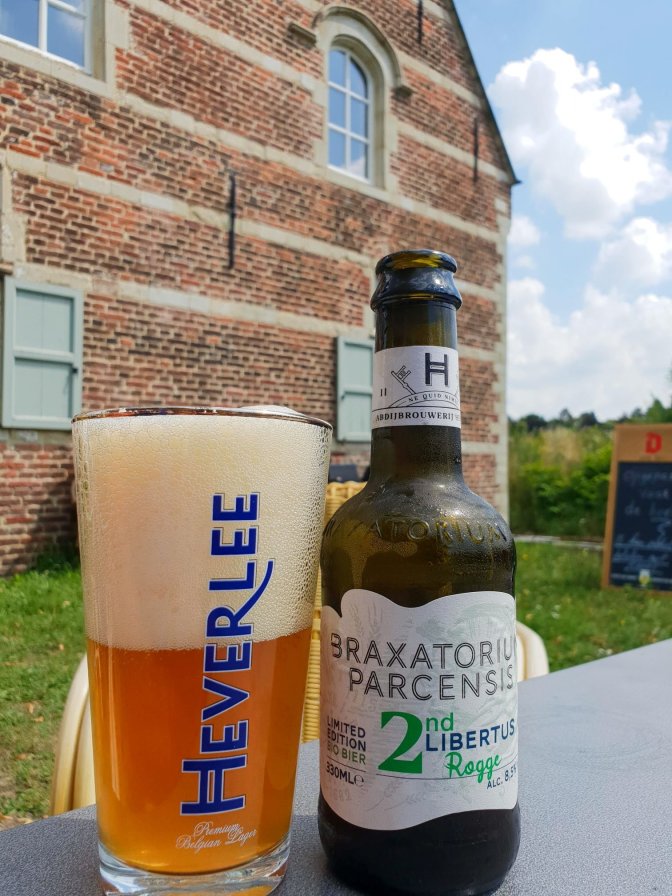
Vlierbeek Abbey
Vlierbeek Abbey started out as a priory owned by the Affligem Abbey in 1125 and eventually became an abbey in 1163. While Vlierbeek did not go on to beer fame and fortune like Affligem, it does have it’s own beer brewed by Brouwerij Broeder Jacob called Vlierbeek 1125 Grand Cru. The best place to enjoy this beer is right on the grounds of the abbey at In Den Rozenkrans.
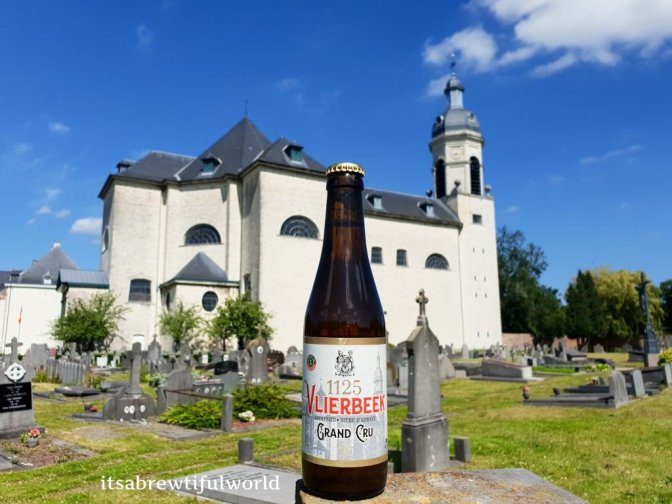
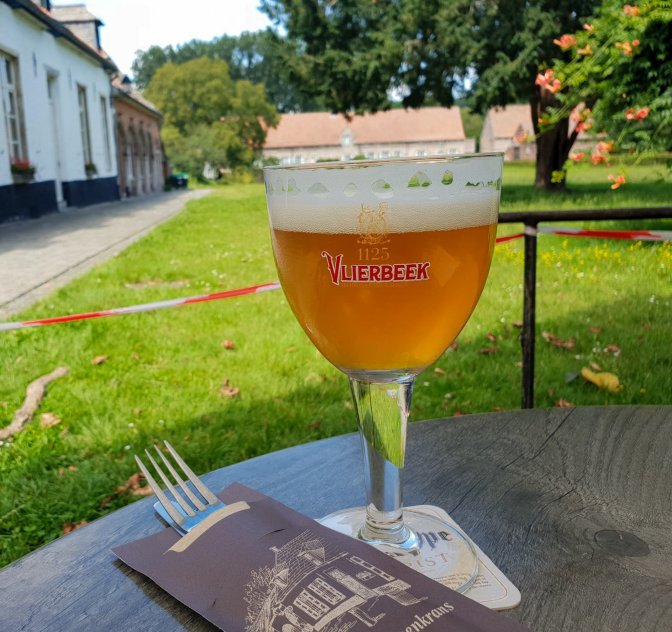
Breweries
I have already mentioned above the Braxatorium Parcensis brewery at Park Abbey. There are three others scattered around the Leuven area.
Stella Artois
The brewery of the famous Winter beer. You can’t miss it coming into Leuven by train or by bike along the canal from Antwerpen. I’ve never personally visited it which may make it seem like I am dismissing it. Hey, if it makes you happy to visit the massive commercial brewery, by all means knock yourself out. To me, I am satisfied waving to it from the street and heading to the Grote Markt or Oude Markt which are arguably the two best places on Earth to enjoy a Stella under the Winter Summer sky.
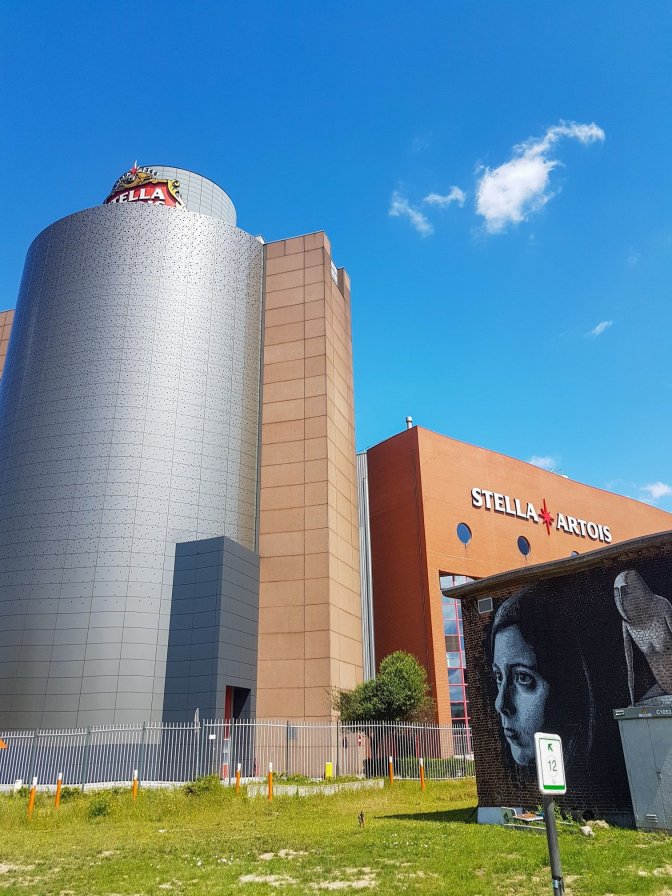

Domus Brauhaus
Just as the name suggests, this brewery exudes a bit of the German brauhaus flair although their beers are mostly Belgian styles. This is the only brewery that I am aware of right in the heart of Leuven’s Old City.
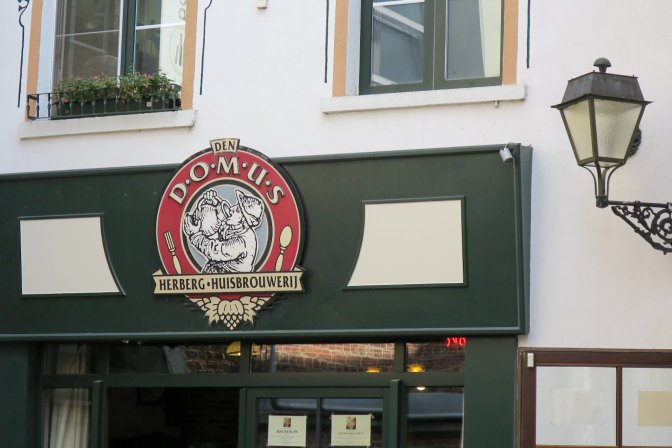
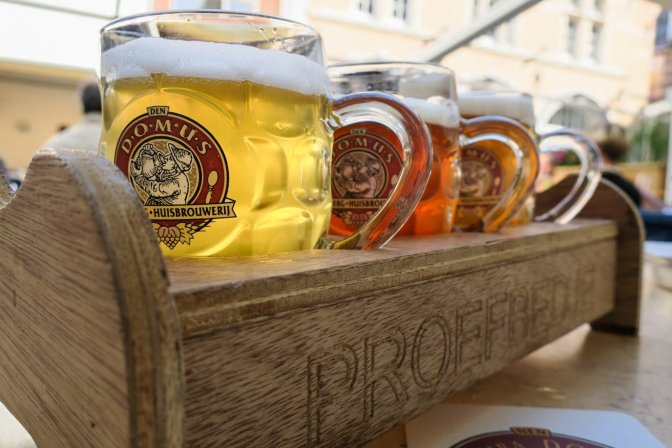
Brouwerij De Coureur
Not your typical neighborhood microbrewery, Brouwerij De Coureur, has a complete tasting room and garden terrace which caters to the local thirsty regulars. This is the only place you can get these beers, and Brouwer Bart is happy to explain the ingredients and brewing techniques for each of his tasty creations. De Coureur means the cyclist in French and the entire brewery is cleverly decorated with various bike components. An incident while cycling in the USA was the turning point for Bart’s brewing aspirations, and I encourage you to read his backstory on the Brouwerij De Coureur website. The residents of Leuven and beyond are much better off for Bart’s fateful ride. The brewery is located one minute away from the Vlierbeek Abbey and In Den Rozenkrans, so they make a nice pairing on anyone’s beer pilgrimage. And about that slogan, I couldn’t agree more.

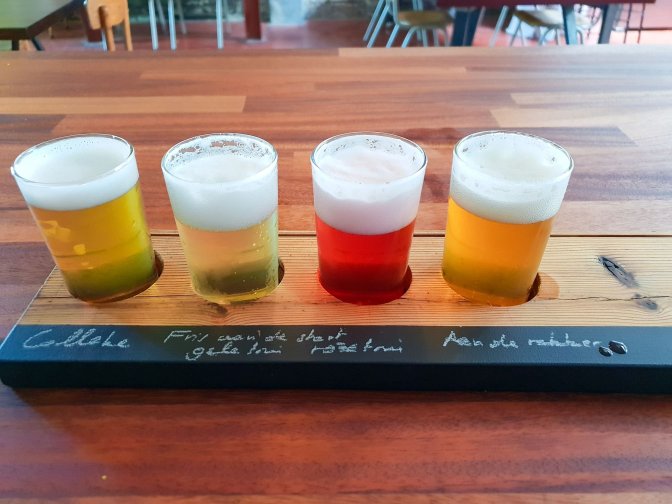
Great Places to Drink Beer
Already mentioned above are De Fiere Margriet, In Den Rozenkrans and the Brasserie De Abdijmolen. Without further ado, some other equally as cool places to enjoy a beer in Leuven.
Blauwe Kater
Blauwe Kater is a beer bar on the Vismarkt with over 100 different beers and doubling as a jazz & blues bar. For the Untappers, there is the house beer Blauwe Kater IPA on bottle.
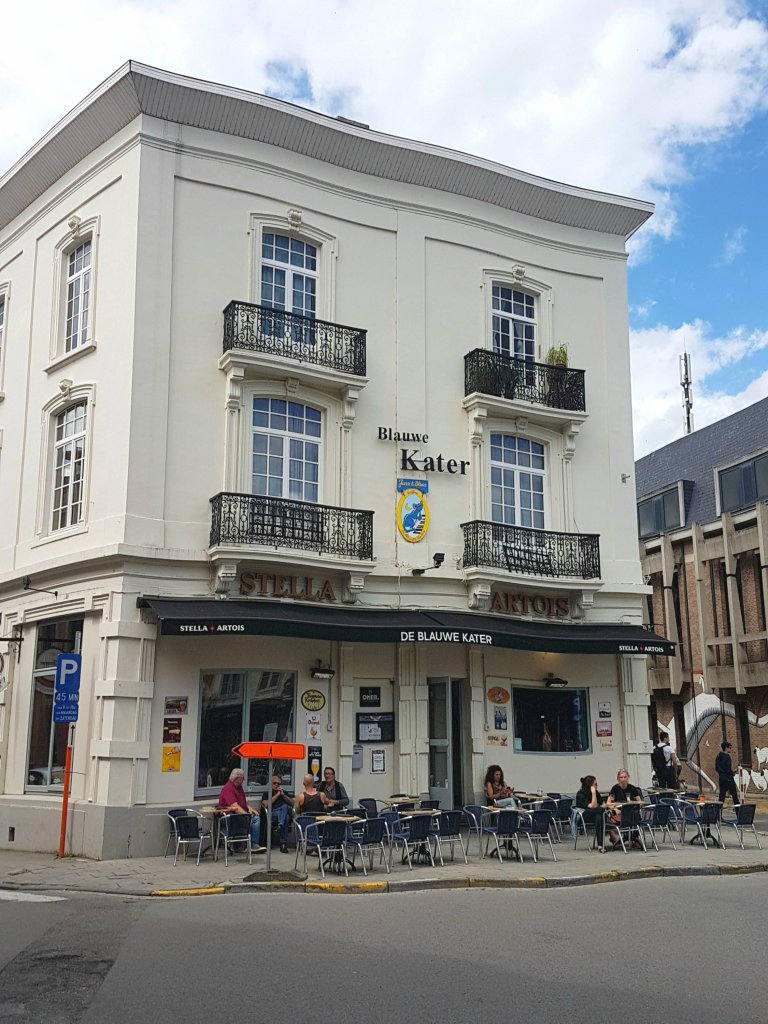
Blauwe Kater 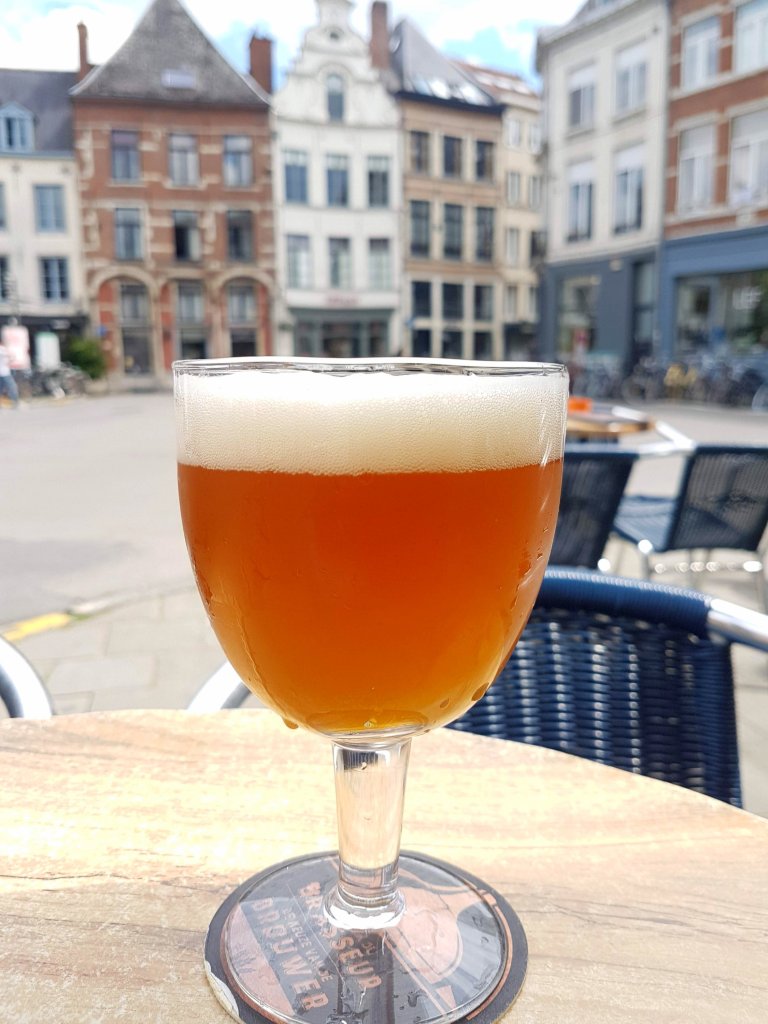
Blauwe Kater IPA
Metafoor and Hops ‘N More
Metafoor is a cool looking brown bar and Hops ‘N More is a great craft beer shop with some tables out front in case you don’t want to wait until you get home to pound down that delectable sour. I include these together because they are both practically neighbors on the lively Parijsstraat running parallel with the Oude Markt.
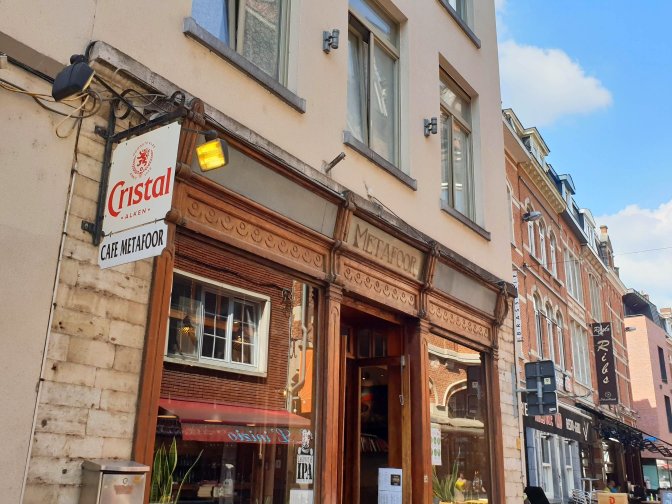
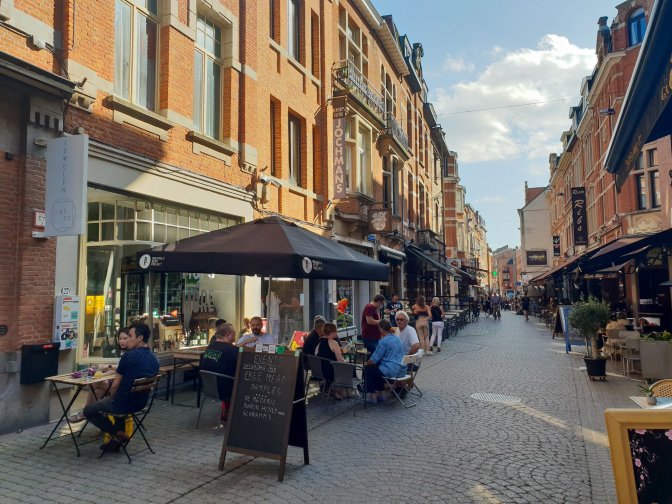
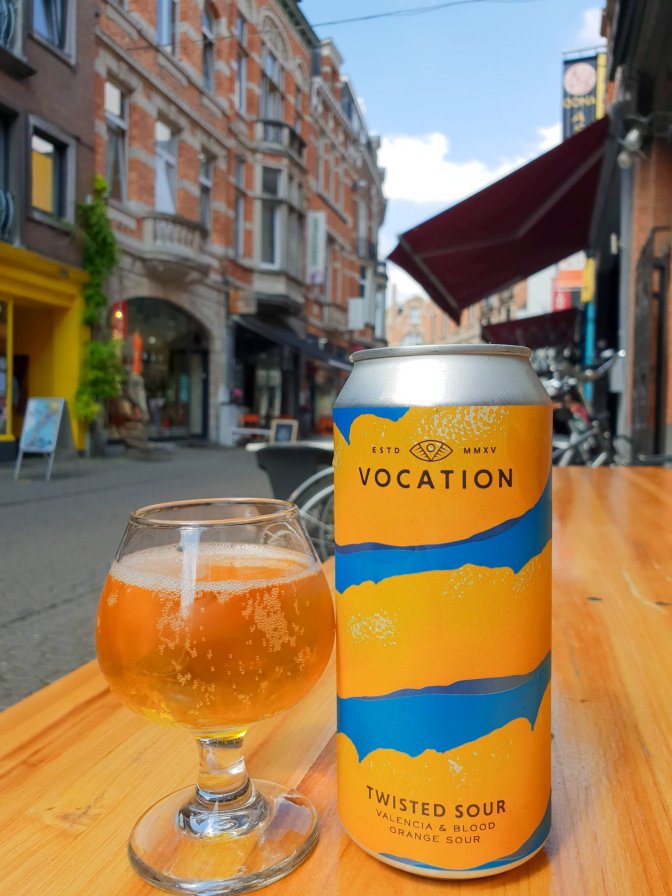
Oude Markt
One cannot visit Leuven, especially on a nice day, and not try to grab a table on the Oude Markt. This is the iconic student center of drinking. It is not always clear which table belongs to what bar, but it hardly matters.
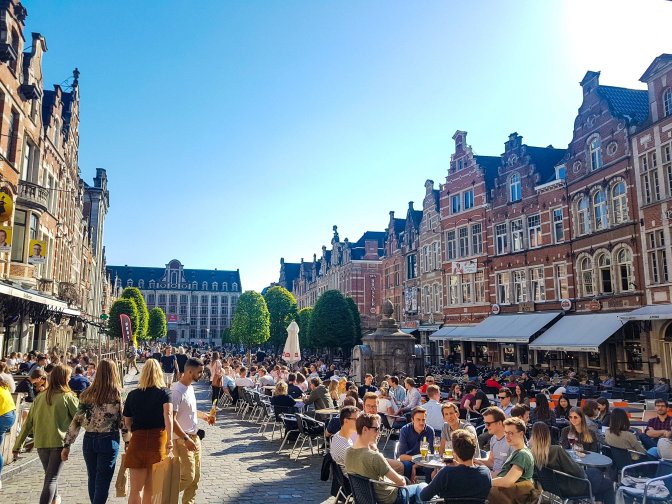
Malz
Malz is a new craft beer bar and shop in Leuven. Thanks to Brouwer Bart from Brouwerij De Coureur for giving me the tip. I have not visited it yet, but from the Malz website, it is worthy of putting in this post sight unseen.
Bottle Shops
There are probably many around Leuven which offer a good selection, but I can vouche for the one below as having a great selection of Leuven beers and more.
Belgian Beer Shop
Located on Tiensestraat, you can also see their selection on the Belgian Beer Shop website. Not to be confused with the shop on the same street near the Domus Brauhaus called Beer Hop Tours & Shop. That one has an ok selection but I recommend to keep walking another 100 meters.
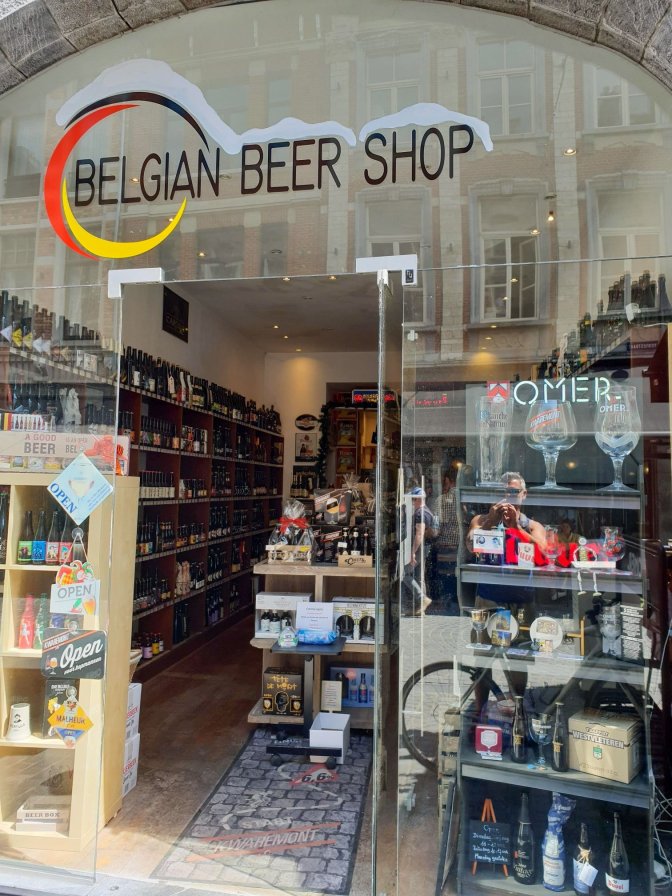
Beer & Bike
There are at least three breweries which have terraces and indoor seating possibilities within a roughly 11km bike ride from the city center of Leuven. There are also several castles in the region around Leuven making Leuven a great focal point for several Beer & Bike rides. Perhaps I will go more in-depth on some of these rides in the future. For now, the brewery teaser:
Hof Ten Dormaal
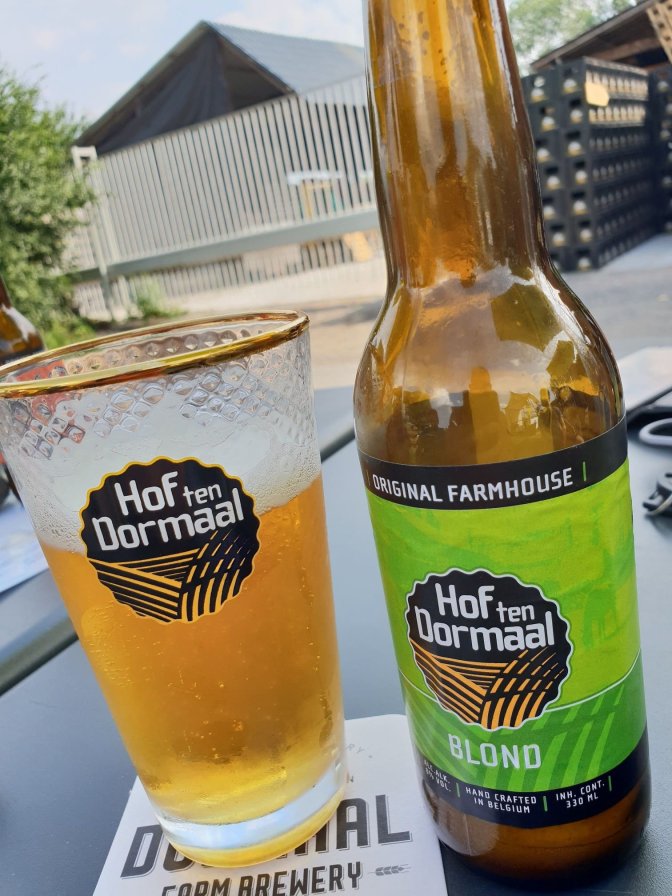
Brouwerij De Kroon

Brouwerij De Vlier
Note that De Vlier is only open on Saturdays from 3-8pm.
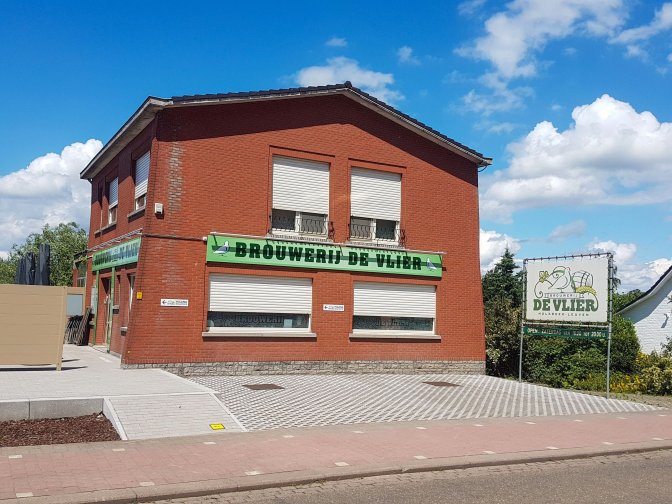
Final Words
Here I am at the Final Words part of my blog post, where I usually find myself waxing sentimental, and maybe to the dismay of hardcore beer lovers just looking for a quick summary of the wonders of the Leuven beer culture, I am about to do it again.
The very first words of this blog post were put to digital memory in June 2019, a year which lives on in my heart with the emotional vividness of a facial expression in a Frans Hals painting. Lest anyone think that all of the beer pilgrimages in this post were accomplished in a single day, the indulgences presented herein were a conglomeration of numerous day trips, some by bike, some by train, and some occurring before June 2019. None of them, however, lasted for more than just a few hours. As I put the final touches to more than two years of drinking beer masquerading as blog research, Leuven remains to me anything but “final”. It still feels like I have only experienced it on it’s fringes. There is still something in the back of my mind going Are you sure you’ve really seen it? After now spending 20% of my life in Belgium, I hardly qualify anymore as a tourist, but Leuven is one of those places that still gives me that giddy holiday tourist travel buzz every time I visit it.
As I was perusing my old travel books for the quotes about Leuven that I have mentioned in this post, I came across an amusing anecdote during one of the author’s visits to Leuven.
The Belgians are not great travelers and know very little about any save their own native cities or towns, and they regard the tourist as mildly insane.
Some Old Flemish Towns by George Wharton Edwards (1911)
While that was probably an unfair generalization in 1911 and definitely would be today, I have no doubt that I spend more time exploring my backyard than most Belgians (I didn’t say all), and I have experienced that feeling of wrinkled eyebrow curiosity on many occasion. Tourists are supposed to go to Antwerp, Brussels, Ghent, and Bruges. Living here, I know that Belgium is so much more than those four cities. When it comes to places in Belgium that a visitor (or resident) wanting to experience a Belgium which won’t be featured in any European Grand Tour guidebook, Leuven (minus the first 800 meters) is highly recommended.


This post brought back great memories for me as I lived in Leuven for a couple of years many moons ago. I had a lovely little apartment on Muntstraat behind the town hall. An amazing beer town indeed, great work.
LikeLiked by 1 person
Glad you enjoyed it and thank you for reading 🙏
LikeLiked by 1 person
Wow! What a beautiful place to enjoy some beer!
LikeLiked by 1 person
Oh my gosh, that town hall is incredible! Sounds like some delicious beers as well 🍻
LikeLiked by 1 person